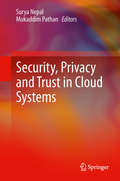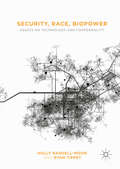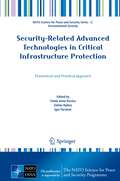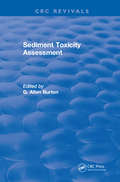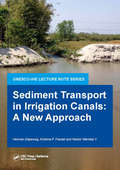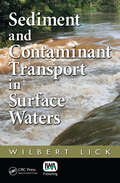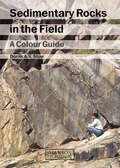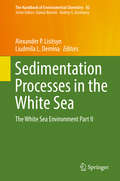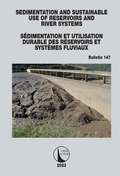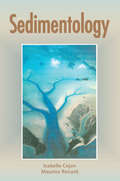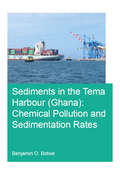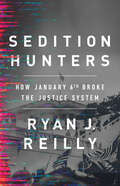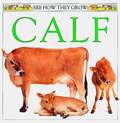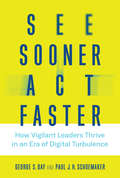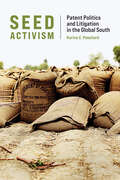- Table View
- List View
Security, Privacy and Trust in Cloud Systems
by Mukaddim Pathan Surya NepalThe book compiles technologies for enhancing and provisioning security, privacy and trust in cloud systems based on Quality of Service requirements. It is a timely contribution to a field that is gaining considerable research interest, momentum, and provides a comprehensive coverage of technologies related to cloud security, privacy and trust. In particular, the book includes - Cloud security fundamentals and related technologies to-date, with a comprehensive coverage of evolution, current landscape, and future roadmap. - A smooth organization with introductory, advanced and specialist content, i.e. from basics of security, privacy and trust in cloud systems, to advanced cartographic techniques, case studies covering both social and technological aspects, and advanced platforms. - Case studies written by professionals and/or industrial researchers. - Inclusion of a section on Cloud security and eGovernance tutorial that can be used for knowledge transfer and teaching purpose. - Identification of open research issues to help practitioners and researchers. The book is a timely topic for readers, including practicing engineers and academics, in the domains related to the engineering, science, and art of building networks and networked applications. Specifically, upon reading this book, audiences will perceive the following benefits: 1. Learn the state-of-the-art in research and development on cloud security, privacy and trust. 2. Obtain a future roadmap by learning open research issues. 3. Gather the background knowledge to tackle key problems, whose solutions will enhance the evolution of next-generation secure cloud systems.
Security, Race, Biopower
by Holly Randell-Moon Ryan TippetThis book explores how technologies of media, medicine, law and governance enable and constrain the mobility of bodies within geographies of space and race. Each chapter describes and critiques the ways in which contemporary technologies produce citizens according to their statistical risk or value in an atmosphere of generalised security, both in relation to categories of race, and within the new possibilities for locating and managing bodies in space. The topics covered include: drone warfare, the global distribution of HIV-prevention drugs, racial profiling in airports, Indigenous sovereignty, consumer lifestyle apps and their ecological and labour costs, and anti-aging therapies. Security, Race, Biopower makes innovative contributions to multiple disciplines and identifies emerging social and political concerns with security, race and risk that invite further scholarly attention. It will be of great interest to scholars and students in disciplinary fields including Media and Communication, Geography, Science and Technology Studies, Political Science and Sociology.
Security, Trust and Privacy Models, and Architectures in IoT Environments (Internet of Things)
by Domenico Rosaci Giuseppe M. L. Sarné Lidia Fotia Fabrizio MessinaThis book is dedicated to the issues of security, trust and privacy models, and architectures in IoT environments. The authors aim to capture the latest research and contributions from academy, industry, and other stakeholders on new security models, architectures, protocols, and standards for ensuring security, privacy, and trustworthiness to IoT systems. The authors discuss the convergence of IoT, software agents, and edge computing to introduce social features into IoT systems, combining trustworthiness and reputation information collected by agents at the edge with security and privacy mechanisms. They also cover experimental and simulated campaigns that evaluate strategies to improve the security and privacy of the IoT world, and at the same time the ability to prevent and deter deceptive behaviors. The book is relevant for researchers, professionals, academics, and students.
Security-Related Advanced Technologies in Critical Infrastructure Protection: Theoretical and Practical Approach (NATO Science for Peace and Security Series C: Environmental Security)
by Tünde Anna Kovács Zoltán Nyikes Igor FürstnerThis book collects the latest research results on security-related advanced technologies. The chapters contain relevant and interesting topics from numerous research. Data science and artificial intelligence research nowadays one of the most important topics for the industry and the security sectors. The autonomy and counter-autonomy research topic are also very interesting. Autonomous cars have become a part of the common days, but their safe and secure application is not assured. The research results in this field want to support and assure safe and secure autonomous applications in our quotidian life. Also, the safe and secure robotics in the industries and the defence assure a high standard of living and the given research results in this area can use to increase it. The researchers work on it and publish the results that can be interesting for the other researchers and the innovators, but also the industrial part members. The researchers work on it and publish the results that can be interesting for the other researchers and the innovators, but also the industrial part members. Communication is a part of our life, but the communication systems mesh all around the world. Communication is the basis of modern life because without it life stop. One other interesting and very important research area is the material sciences. Virtual life cannot exist without hardware and materials. The new technical applications require new materials, that can suffice the mechanical and physical, chemical properties demand. Nowadays a common requirement of the materials the high strength and lightweight. Researchers want to serve the industrial requests and innovate new composite materials or increase the properties of the material through a new technological process. The authors publish the latest results of the security-related research area including the newest innovations and technologies which rise the interest of the defence and the modern industries even the interest of other researchers.
Sediment Source to Sink: Deciphering Sediment Connectivity to Large Dams in Damodar River Basin (Earth and Environmental Sciences Library)
by Ramkrishna Maiti Sk Asraful AlamThis book provides a novel integrated solution for sedimentation problems in major dams in the Damodar River Basin. Damodar River in India has been extensively regulated by major dams since the 1950s to manage water resources and control floods. According to the Central Water Commission and Damodar Valley Corporation report (2018, 2006), the Maithon, Panchet, and Tenughat dams suffer from a considerable reduction in water-holding capacity by 38%, 25.17%, and 16.8% respectively due to substantial sediment production from the upper catchment. The unpredictable nature of climate change in addition to human-caused impacts (deforestation, open cast mining) significantly enhanced soil erosion and ready downstream transfer into the channels. Thus, it is essential to identify the sediment source zone and understand the nature of connectivity between the sediment source and to sink (dam) simultaneously managing the sediment yield from the upper catchment is also important for increasing the life span of dams. The book examines the entire domain of sedimentation processes connected to the dams by exploring the upper catchment's sediment source zone and downslope sediment connectivity considering numerous landscape features into account. The book will appeal to environmental scientists and civil engineers, as well as students, researchers, dam operators, government agencies, policymakers, management planners, conservation organizations, local communities, earth science, and applied geomorphology.
Sediment Toxicity Assessment
by G.Allen BurtonSediment Toxicity Assessment provides the latest information regarding how to evaluate sediment contamination and its effects on aquatic ecosystems. It presents an integrated ecosystem approach by detailing effective assessment methods, considerations, and effects to each major component of marine and freshwater systems, including the benthos, plankton, and fish communities. The approaches emphasize defining habitat conditions (physical and chemical), toxicant bioavailability, factors influencing toxicity (lab and field), biomarkers, acute and chronic toxicity, study design, collection methods, and EPA management strategies. The book also explains how to integrate the assessments.Sediment Toxicity Assessment will be useful to to all environmental managers, environmental scientists, ecotoxicologists, environmental regulators, aquatic ecologists, environmental contractors and consultants, instructors, students, conservation commissions, and environmental activist organizations.
Sediment Transport Dynamics
by Weiming WuThis book focuses on the fundamentals of sediment transport in surface waters. It covers sediment properties, open channel flows, sediment particle settling, incipient motion, bed forms, bed load, suspended load, total load, cohesive sediments, water-sediment two-phase flows, hyperconcentrated flows, debris flows, wave-induced sediment transport, turbidity currents, and physical modeling. Besides the primary context of river sedimentation, this book extensively covers sediment transport under coexisting waves and currents in coasts and estuaries, hyperconcentrated and debris flows in rivers, as well as turbidity currents in lakes, reservoirs, channels, and the ocean. It includes a chapter on the water-sediment two-phase flow theory, which is considered the basis of many sediment transport models. It introduces some special topics have that emerged in recent years, such as the transport of mixed cohesive and noncohesive sediments, biofilm-coated sediments, and infiltrated sand within gravel and cobble beds. The text merges classical and new knowledge of sediment transport from various sources in English and non-English literature and includes important contributions made by many scientists and engineers from all over the world. It balances the breadth, depth, fundamental importance, practical applicability, and future advancement of the covered knowledge, and can be used as a text and reference book. The chapters are arranged in a useful sequence for teaching purposes. Certain homework problems are prepared, which also highlight the important topics for instructors to select. Solutions to homework problems are available from the author by request.
Sediment Transport and Morphodynamics Modelling for Coasts and Shallow Environments
by Vanesa MagarThis reference for engineers, and graduate students covers sediment transport and morphodynamics modelling in nearshore environments. It presents the fundamentals required for understanding the physics and for setting up numerical models. This book covers hydrodynamics of estuarine and coastal environments, properties of seafloor and estuarine composition, and hydroenvironmental interactions; emphasising the inter-relations of small- and large-scale processes, and short- and large-evolution timescales. The focus is, principally, on the application of shallow-water theory, but some surface wave models, and coupling of shallow-water models with surface waves is also discussed to some extent. The guidance on running regional models and the case studies presented are directed to managed realignment, coastal protection, climate change impacts, and offshore renewables. Key features: Gives a balanced review of this rich interdisciplinary area Bridges practical engineering and research Offers both large- and small-scale application Suits graduate students and researchers as well as consulting engineers Vanesa Magar is a senior researcher and associate professor at the Centro de Investigación Científica y de Educación Superior de Ensenada (CICESE) in Baja California, Mexico. She was formerly a researcher and then a lecturer at Plymouth University, UK.
Sediment Transport in Irrigation Canals: A New Approach (IHE Delft Lecture Note Series)
by Herman Depeweg Krishna P. Paudel Néstor Méndez VSediment transport in irrigation canals influences to a great extent the sustainability of an irrigation system. Unwanted erosion or deposition will not only increase maintenance costs, but may also lead to unfair, unreliable and unequitable distribution of irrigation water to the end users. Proper knowledge of the characteristics, including behaviour and transport of sediment will help to design irrigation systems, plan effi cient and reliable water delivery schedules, to have a controlled deposition of sediments, to estimate and arrange maintenance activities, etc. The main aim of these lecture notes is to present a detailed analysis and physical and mathematical descriptions of sediment transport in irrigation canals and to describe the mathematical model SETRIC that predicts the sediment transport, deposition and entrainment rate as function of time and place for various flow conditions and sediment inputs. The model is typically suited for the simulation of sediment transport under the particular conditions of non-wide irrigation canals where the flow and sediment transport are strongly determined by the operation of the flow control structures. The lecture notes will contribute to an improved understanding of the behaviour of sediments in irrigation canals. They will also help to decide on the appropriate design of the system, the water delivery plans, to evaluate design alternatives and to achieve an adequate and reliable water supply to the farmers.
Sediment and Contaminant Transport in Surface Waters
by Wilbert LickContaminated bottom sediments and their negative impacts on water quality are a major problem in surface waters throughout the United States as well as in many other parts of the world. Even after elimination of the primary contaminant sources, these bottom sediments will be a main source of contaminants for many years to come. In order to determin
Sedimentary Rocks in the Field: A Colour Guide
by Dorrik A.V. StowIdeas and concepts in sedimentology are changing rapidly but fundamental field work and data collection remain the basis of the science. This book is intended as a guide to the recognition and description of sedimentary rocks in the field. It aims to help the geologist know what to observe and record and how best to interpret this data. The emphasi
Sedimentation Processes in the White Sea: The White Sea Environment Part II (The Handbook of Environmental Chemistry #82)
by Liudmila L. Demina Alexander P. LisitsynThis book presents a new perspective on the sedimentation processes in the White Sea, based on a multidisciplinary research study conducted between 2001 and 2016. It provides a comprehensive review and discusses the latest research findings on the ecosystem of this sub-arctic zone.The topics addressed include suspended particulate matter as a main source and proxy of the sedimentation processes in the White Sea; vertical fluxes of dispersed sedimentary matter and absolute masses in the White Sea; and the development history and quaternary deposits of the modern White Sea basin. The authors closely examine the abundance and species composition of microalgae associations and the environmental conditions in the bottom sediments of the White Sea, namely, heavy metal accumulation and aliphatic and polycyclic aromatic hydrocarbons. The book ends contain a summary of the key conclusions and recommendations. Together with the companion volume Biogeochemistry of the Atmosphere, Ice and Water of the White Sea: The White Sea Environment Part I, it offers an essential source of information for postgraduate students, researchers, and stakeholders alike.
Sedimentation and Sustainable Use of Reservoirs and River Systems / Sédimentation et Utilisation Durable des Réservoirs et Systèmes Fluviaux (ICOLD Bulletins Series)
by ICOLD CIGBICOLD Bulletin 147 discusses the upstream and downstream fluvial morphological impacts of reservoir sedimentation and possible mitigation measures. The current state of and possible future sediment deposition in reservoirs have been investigated globally with the aid of the ICOLD Register on Dams. The global mean reservoir sedimentation rate was found to be 0.8 % of the original storage capacity per year. The book also investigates the impacts of dams on the ecology related to fluvial morphological changes, and guidelines are proposed to mitigate the impacts on the downstream river morphology. Finally an economical model is presented which considers a life cycle approach for reservoir conservation. Ce CIGB Bulletin 147 traite des impacts morphologiques fluviaux en amont et en aval de la sédimentation des réservoirs et des mesures d'atténuation possibles. L'état actuel et l'avenir possible du dépôt de sédiments dans les réservoirs ont été étudiés à l'échelle mondiale à l'aide du registre des barrages de la CIGB. Le taux moyen mondial de sédimentation des réservoirs s'est avéré être de 0,8 % de la capacité de stockage initiale par an. Le livre étudie également les impacts des barrages sur l'écologie liés aux changements morphologiques fluviaux, et des directives sont proposées pour atténuer les impacts sur la morphologie des rivières en aval. Enfin, un modèle économique est présenté qui prend en compte une approche de cycle de vie pour la conservation des réservoirs.
Sedimentation: Exclusion and Removal of Sediment from Diverted Water (Iahr Design Manual Ser. #6)
by Arved J. RaudkiviThis monograph provides the practising engineer with a concise overview of the methods of water diversion and exclusion or removal of sediment from the diverted water. The emphasis is on flow features and the associated conveyance of sediments.
Sedimentology
by I. Cojan M. RenardThis title incorporates conceptual advancements without neglecting sedimentary processes and the observation of sedimentary bodies. Reconstruction of environments and basin analysis are also discussed, using field data, well logging and seismic data.
Sediments Contamination and Sustainable Remediation
by Catherine N. Mulligan Masaharu Fukue Yoshio SatoAlthough valuable resources in river basins and other aqueous environments, sediments often receive much less attention from researchers, policymakers, and other professionals than other components of the ecosystem. Until now. Highlighting the important role that sediments play in the geoenvironment, Sediments Contamination and Sustainable Remediat
Sediments in the Tema Harbour: Chemical Pollution and Sedimentation Rates (IHE Delft PhD Thesis Series)
by Benjamin O. BotweSediment pollution and accumulation in harbours are major environmental issues and studies that advance their solutions are essential for harbour sustainability. This book provides the first comprehensive assessment of chemical pollution in sediments and sediment accumulation rates in the tropical Tema Harbour (Ghana). This book contributes to improving our ability to use an integrated approach involving sediment chemistry and bioassays in one comprehensive assessment of the contamination state of a tropical coastal environment. Whole-sediment toxicity bioassays using the amphipod Corophium volutator and the polychaete Hediste diversicolor as bioindicators were combined with data on concentrations of total metal and metal binding forms, radionuclides, organochlorine pesticides and polycyclic aromatic hydrocarbons in bottom sediments as well as total metal concentrations in settling silt-clay particles collected by sediment traps to characterise the hazard, risk and impact of sediments from the tropical coastal Tema Harbour.
Sediments: Chemistry and Toxicity of In-Place Pollutants
by Renato BaudoThis important volume-the product of a meeting of a select group of scientists-provides the most recent research results from the world's leaders in the study of toxic pollutants in sediments.It gives practical information on measuring and mapping distributions of concentrations of pollutants and their toxic effects in sediments. Also covered are the use and relative advantages and disadvantages of benthic chambers, sedimentation traps, box corers, "peepers" and other sampling techniques in sediment research and assessment.Important topics covered include: bioassay, elemental speciation, diffuse source problems, nutrient flux, biomethylation, bioavailability, and toxicity assessment.Will help in assessment and monitoring of chemistry, dynamics, bioavailability, and toxicity of pollutants, as well helping to chart courses for remedial action.This book will be of interest to anyone interested in the processes controlling the chemistry and movement of pollutants in sediments, especially:limnologistsaquatic toxicologistsengineerslake managersecologistsbiologistsenvironmental chemists
Sedition Hunters: How January 6th Broke the Justice System
by Ryan J. ReillyThe January 6th attack is an unprecedented crime in American history. Sprawling and openly political, it can't be handled by the traditional rules and norms of law enforcement--threatening the very idea of justice and its role in society. The attack on the Capitol building following the 2020 election was an extraordinarily large and brazen crime. Conspiracies were formed on social media in full public view, the law-breakers paraded on national television with undisguised faces, and with outgoing President Donald Trump openly cheering them on. The basic concept of law enforcement--investigators find criminals and serve justice--quickly breaks down in the face of such an event. The system has been strained by the sheer volume of criminals and the widespread perception that what they did wasn't wrong. A mass of online tipsters--"sedition hunters"--have mobilized, simultaneously providing the FBI with valuable intelligence and creating an ethical dilemma. Who gets to serve justice? How can law enforcement still function as a pillar of civil society? As the foundations of our government are questioned, the FBI and Department of Justice are the first responders to a crisis of democracy and law that threatens to spread, and fast. In this work of extraordinary reportage, Ryan Reilly gets to know would-be revolutionaries, obsessive online sleuths, and FBI agents, and shines a light on a justice system that's straining to maintain order in our polarized country. From the moment the police barriers were breached on January 6th, 2021, Americans knew something had profoundly changed. Sedition Hunters is the fascinating, high-stakes story of what happens next.
See How It's Made: Clothes, Toys, Shoes, Food, Drinks, Skateboards
by Penny Smith Lorrie MackThis start-to-finish look at how everyday objects are made takes readers onto the factory floor to see glass being blown, apple juice being pressed, and LEGO bricks being assembled.
See How They Grow: Calf
by Mary LingThe growth and development of a calf from the moment it is born through its early stages of life.
See Sooner, Act Faster: How Vigilant Leaders Thrive in an Era of Digital Turbulence (Management on the Cutting Edge)
by Paul J. Schoemaker George S. DayHow organizations can anticipate threats, spot opportunities, and act faster when the time is right; with rich examples including Adobe, MasterCard, and Amazon.When turbulence is the new normal, an organization's survival depends on vigilant leadership that can anticipate threats, spot opportunities, and act quickly when the time is right. In See Sooner, Act Faster, strategy experts George Day and Paul Schoemaker offer tools for thriving when digital advances intensify turbulence. Vigilant firms have greater foresight than their rivals, while vulnerable firms often miss early signals of external threats and organizational challenges. Charles Schwab, for example, was early to see and act on the promise of “robo-advisors”; Honeywell, on the other hand, stumbled when Nest Labs came out first with a “smart” thermostat. Day and Schoemaker show leaders how to assess their vigilance capabilities and cultivate insight and foresight throughout their organizations. They draw on a range of cases, including Adobe and Intuit's move to the cloud, Shell's investment in clean energy, and MasterCard's early recognition of digital challenges. Day and Schoemaker describe how to allocate the scarce resource of attention, how to detect weak signals and separate them from background noise, and how to respond strategically before competitors do. The challenge is not just to act faster but to act wisely, and the authors suggest ways to create dynamic portfolios of options. Finally, they offer an action agenda, with tips for fostering vigilance and agility throughout an organization. The rewards are stronger market positions, higher profits and growth, more motivated employees, and organization longevity.
Seed Activism: Patent Politics and Litigation in the Global South (Food, Health, and the Environment)
by Karine E. PeschardHow lawsuits around intellectual property in Brazil and India are impacting the patentability of plants and seeds, farmers&’ rights, and the public interest.Over the past decade, legal challenges have arisen in the Global South over patents on genetically modified crops. In this ethnographic study, Karine E. Peschard explores the effects of these disputes on people&’s lives, while uncovering the role of power—material, institutional, and discursive—in shaping laws and legal systems. The expansion of corporate intellectual property (IP), she shows, negatively impacts farmers&’ rights and, by extension, the right to food, since small farms produce the bulk of food for domestic consumption. Peschard sees emerging a new legal common sense concerning the patentability of plant-related inventions, as well as a balance among IP, farmers&’ rights, and the public interest.Peschard examines the strengthening of IP regimes for plant varieties, the consolidation of the global biotech industry, the erosion of agrobiodiversity, and farmers&’ dispossession. She shows how litigants question the legality of patents and private IP systems implemented by Monsanto for royalties on three genetically modified crop varieties, Roundup Ready soybean in Brazil and Bt cotton and Bt eggplant in India. Peschard argues that these private IP systems have rendered moot domestic legislation on plant variety protection and farmers&’ rights. This unprecedented level of corporate concentration in such a vital sector raises concerns over the erosion of agricultural biodiversity, farmers&’ rights and livelihoods, food security, and, ultimately, the merits of extending IP rights to higher life forms such as plants.
Seed Biology and Yield of Grain Crops
by Dennis EgliThis new edition of an established title examines the determination of grain crop yield from a unique perspective, by concentrating on the influence of the seed itself. As the food supply for an expanding world population is based on grain crops harvested for their seeds, understanding the process of seed growth and its regulation is crucial to our efforts to increase production and meet the needs of that population. Yield of grain crops is determined by their assimilatory processes such as photosynthesis and the biosynthetic processes in the seed, which are partly regulated within the seed itself. Providing a timely update in this field and highlighting the impact of the seed on grain crop yields, this book: · Describes all aspects of seed growth and development, including environmental and genetic effects on growth rate and length of the filling period. · Discusses the role of the seed in determining the two main yield components: individual seed weight and number of seeds per unit area. · Uses the concepts and models that have been developed to understand crop management and yield improvement. Substantially updated with new research and further developments of the practical applications of the concepts explored, this book is essential reading for those concerned with seed science and crop yield, including agronomists, crop physiologists, plant breeders, and extension workers. It is also a valuable source of information for lecturers and graduate students of agronomy and plant physiology.
Seed Biology and Yield of Grain Crops, 2nd Edition
by Dennis B. EgliThis new edition of an established title examines the determination of grain crop yield from a unique perspective, by concentrating on the influence of the seed itself. As the food supply for an expanding world population is based on grain crops harvested for their seeds, understanding the process of seed growth and its regulation is crucial to our efforts to increase production and meet the needs of that population. Yield of grain crops is determined by their assimilatory processes such as photosynthesis and the biosynthetic processes in the seed, which are partly regulated within the seed itself. Providing a timely update in this field and highlighting the impact of the seed on grain crop yields, this book: #65533; Describes all aspects of seed growth and development, including environmental and genetic effects on growth rate and length of the filling period. #65533; Discusses the role of the seed in determining the two main yield components: individual seed weight and number of seeds per unit area. #65533; Uses the concepts and models that have been developed to understand crop management and yield improvement. Substantially updated with new research and further developments of the practical applications of the concepts explored, this book is essential reading for those concerned with seed science and crop yield, including agronomists, crop physiologists, plant breeders, and extension workers. It is also a valuable source of information for lecturers and graduate students of agronomy and plant physiology.
